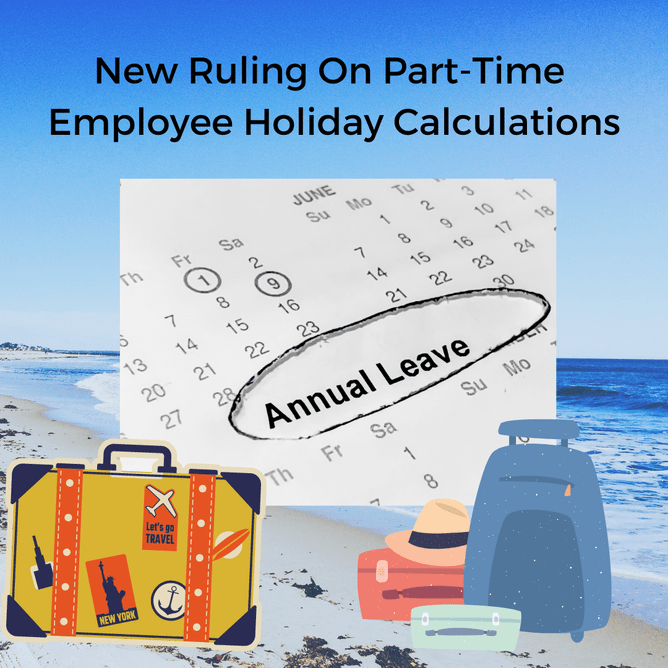The way employers calculate holiday pay for part time, variable hour employees has been ruled unlawful by the Supreme Court and demonstrates how payroll is a lot more complex than may seem.
A long running case brought by a part time music teacher was finally concluded this week. Mrs Brazel worked for The Harpur Trust as a music teacher, she had variable hours each week depending on the demand for music lessons during the school term time. She had a permanent, zero hours contract and had to take her leave during the school holidays, not school term time. At the beginning of her employment, her holiday was calculated using the ‘calendar week method’ however, in 2011, the Harpur Trust began using the ’12.07% method’. The new method left Mrs Brazel with less holiday pay.
The Calendar Week Method:
In this case, the method calculates average weekly pay during the 12 weeks before taking holiday (this has now changed to 52 weeks), it takes away any weeks in which the employee had not been paid and then multiplied that by 5.6 (5.6 weeks is the statutory minimum holiday.)
The 12.07% Method:
This method works on the fact a full time employee has the statutory minimum 5.6 weeks of paid holiday. That means that they will be working for 46.4 weeks of the year. Therefore, 5.6 weeks is 12.07% of the remaining 46.4 weeks worked so 12.07% of the earnings are paid. In this case, Ms Brazel was paid 12.07% of the hours she worked at the end of each term.
The problem with the 12.07% method for Ms Brazel is that she received less holiday pay than she had with the Calendar Week method so she made a claim for unlawful deduction of wages which ruled in favour of The Harpur Trust in 2015. This was then appealed and was found in Ms Brazel’s favour so The Harpur Trust appealed to the Supreme Court.
The Harpur Trust argued to the Supreme Court that:
“The Working Time Regulations 1998 (WTR) must require holiday for part-year workers to be pro-rated, otherwise they would receive a disproportionate amount of holiday and holiday pay.”
They also contended that a part-time employees holiday entitlement should be prorated further to take in to account the weeks not worked.
The Supreme Court looked at whether holiday entitlement is calculated:
1) on the same principle, proportionally, as full-time employees (which would mean that the weeks that they do not work reduce their entitlement) or
2) whether their leave must be calculated ignoring those weeks.
Option 2 would mean employees have entitlement which proportionally exceeds that of other employees.
The Supreme Court responded to The Harpur Trust's argument by stating:
“We do not regard any slight favouring of workers with a highly atypical work pattern as being so absurd as to justify the wholesale revision of the statutory scheme which the Harpur Trust’s alternative methods require.”
And stated:
“The Court of Appeal was correct to hold that the calendar week method represents the correct implementation of the WTR and that this is fully compliant with EU law ” continuing:
“In short, the amount of leave to which a part-year worker under a permanent contract is entitled is not required by EU law to be, and under domestic law is not, prorated to that of a full-time worker” and dismissed The Harpur Trust’s appeal.
With this ruling now in, the 12.07% method should no longer be used to calculate leave for ‘casual’ workers with a contract and it also displays how HR and payroll are closely linked in business. This ruling shows the importance of the need for payroll professionals to have knowledge of how employment law needs to be applied with payroll and how costly misunderstanding and lack of knowledge can be to an employer.
If you need help understanding how this ruling effects your part-time employees or want to check whether your payroll is compliant, contact us for a no obligation chat here, call us on: 01865 522785 or e mail: info@cashtrak.co.uk.

